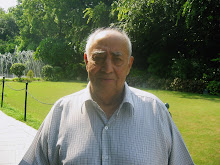Akora, an idyllic village on the banks of the Lidder river. Fishing resort of Maharaja Hari Singh of Jammu and Kashmir.
The year was 1936 and the Maharaja still ruled the state. He had selected a very beautiful spot for fishing trout ,a game of which he was very fond. His Fishing lodge was made of sheered Deodar which looked very pretty. Usually the Maharaja spent here relaxed week-ends in the summer.
A little distance away was a small hamlet tucked away in a grove of massive chinars [maple trees] about five hundred yards from the river. It was a beautiful village with houses built with mud baked bricks surrounded by small kitchen gardens that provided the family all the vegetables they needed. My grandmother’s house, a three storey building of mud-baked bricks, stood at a very commanding spot. It was surrounded by other houses of grandma’s relatives.
She owned a sizeable piece of land which gave her enough income to live in comfort. Others in the village looked up to her. She also owned the only store in the village and all the villagers drew their requirements like salt, cooking oil, toiletries, kerosene etc from this shop.
Having grown up in the district towns of British India [I was 11 years going on to twelve ] this village seemed to me a place from some dream story book.
Looking back on it now, I am reminded of the famous song of the seventies movies:
Gori tera gaon bara piyara
Main to gaya mara ake yehan re
People in the village lived a very simple but relaxed life. For most of them the day began with green tea, a small kulcha [fetched from the district headquarters of Anant Nag, about 8 miles away, on the other bank of the river] or home made paranthas. By about 11 the young gathered at the char-chinar, a square shaded by the chinars. Here all the news relating to the village, like the flow of water in the river Lidder, the movement of the Maharaja and his staff, the number of yatris visiting Mattan [Martand], a pilgrimage spot about three miles from the village, was shared. Someone would produce a pack of cards and a game of 304 would begin, lasting the whole morning.
After a lunch of rice, Haak,a leafy vegetable peculiar to Kashmir, dam aloo or khatte baigan, paneer or a bit of non-veg whenever available [mutton had to be brought from Anant Nag] everyone rested for some time. At about 4 pm the company re-appeared at the char chinar. This time someone would bring a samovar and a round of sheer-chai [tea with milk and salt] would go round, along with hukka-smoking and all the gossip available.
The gathering would disperse by about 6 pm so that everyone could be home while there was still some day-light. There was no electricity and petromaxes were expensive, lanterns gave out weak glows, beams of light, sufficient to eat dinner and go to bed. The ‘early to bed and early to rise,’ practice was prevalent.
Traveling was difficult.The nearest bus station was in Matan, about three miles away. One had to walk all the way, unless one could ride a horse. A visit to Srinagar [the state capital] required a few preparations, a change of decent clothes, generally borrowed from grandma’s house, arrangements to stay in the big town, and the timing of the bus to travel to Srinagar as the bus stand was not near the village. Consequently travel was kept to a minimum and undertaken when absolutely necessary. Otherwise life in the village was self-sufficient.
I was quite enthusiastic to spend my summer vacation in this village. But it was a big change from the life-style I was used to. I missed electricity at sun-down as hordes of mosquitoes attacked us and we had no way to defend ourselves. ‘No electricity’ meant we had to use lanterns and the light was not enough to read or write. We had to have our dinner between 6 to 7pm, and go to bed soon after. After 7pm the entire village came to a stand still. There was no night life.
After a week I was bored and keen to get out. But I still have memories of roses, kinas, marigold, bougainvillea, honeysuckle, sunflowers, champa and bella growing all over. Our picnics along the river front and hapatnar,[the bear-den] were very enjoyable and relaxed. Hapat-nar was situated in a gorge wooded by tall deodars. In the thick of the jungle, there was a mandir. We spent three nights in this temple. At night, we were visited by curious bears who played many pranks and watched by us from behind steel doors and windows. The trek to and fro was done on foot and we had to move in broad day light only.
Sunday, June 14, 2009
Subscribe to:
Post Comments (Atom)

No comments:
Post a Comment